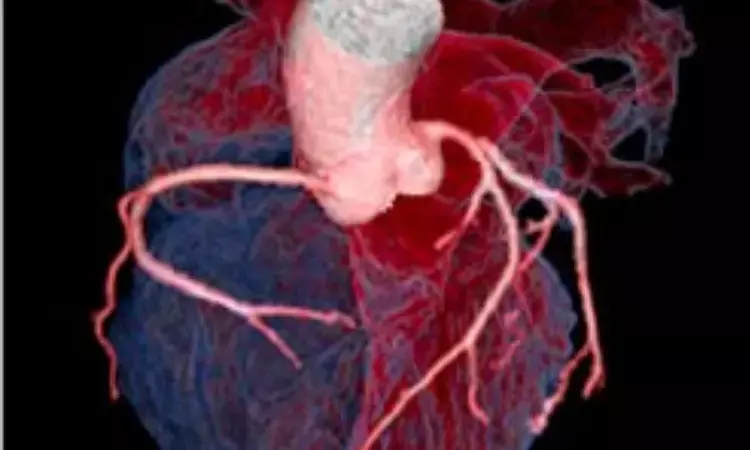- Home
- Medical news & Guidelines
- Anesthesiology
- Cardiology and CTVS
- Critical Care
- Dentistry
- Dermatology
- Diabetes and Endocrinology
- ENT
- Gastroenterology
- Medicine
- Nephrology
- Neurology
- Obstretics-Gynaecology
- Oncology
- Ophthalmology
- Orthopaedics
- Pediatrics-Neonatology
- Psychiatry
- Pulmonology
- Radiology
- Surgery
- Urology
- Laboratory Medicine
- Diet
- Nursing
- Paramedical
- Physiotherapy
- Health news
- Fact Check
- Bone Health Fact Check
- Brain Health Fact Check
- Cancer Related Fact Check
- Child Care Fact Check
- Dental and oral health fact check
- Diabetes and metabolic health fact check
- Diet and Nutrition Fact Check
- Eye and ENT Care Fact Check
- Fitness fact check
- Gut health fact check
- Heart health fact check
- Kidney health fact check
- Medical education fact check
- Men's health fact check
- Respiratory fact check
- Skin and hair care fact check
- Vaccine and Immunization fact check
- Women's health fact check
- AYUSH
- State News
- Andaman and Nicobar Islands
- Andhra Pradesh
- Arunachal Pradesh
- Assam
- Bihar
- Chandigarh
- Chattisgarh
- Dadra and Nagar Haveli
- Daman and Diu
- Delhi
- Goa
- Gujarat
- Haryana
- Himachal Pradesh
- Jammu & Kashmir
- Jharkhand
- Karnataka
- Kerala
- Ladakh
- Lakshadweep
- Madhya Pradesh
- Maharashtra
- Manipur
- Meghalaya
- Mizoram
- Nagaland
- Odisha
- Puducherry
- Punjab
- Rajasthan
- Sikkim
- Tamil Nadu
- Telangana
- Tripura
- Uttar Pradesh
- Uttrakhand
- West Bengal
- Medical Education
- Industry
Nomogram may predict readmission within 6 months after treatment in ACS patients

CHINA: In a study published in BMC Cardiovascular Disorders, a nomogram prediction model was designed and internally verified to predict patient readmission within six months of acute coronary syndrome.
A significant factor in cardiovascular disease-related deaths is ACS. In ACS patients, readmission is a frequent, expensive, and avoidable adverse event. Early readmission is still a regular occurrence, which greatly increases the financial burden on patients and adversely impacts their quality of life, even if the survival rate of ACS patients following hospitalization has increased.
Ke Li, Department of Cardiology, Hainan Hospital of Chinese People's Liberation Army General Hospital and team noted that "it is crucial to investigate and identify these individuals who are at risk of readmission as well as the predictors linked with readmission in order to implement proactive secondary prevention measures to decrease ACS readmissions, improve short- and long-term outcomes, and lessen economic burden."
The researchers sought to investigate the factors that influence readmission in ACS patients within six months, to create a prediction model, and to produce a nomogram
A retrospective cohort analysis involving 498 ACS patients treated at the Chinese People's Liberation Army General Hospital's Second Medical Center between January 2016 and March 2019 was carried out. To look at variables for readmission within six months, univariate and multivariate logistic regression with odds ratios (OR) and two-sided 95% confidence interval (CI) analyses were performed. The cohort was randomly split into a training cohort and a validation cohort in order to construct a prediction model and validate the model. To evaluate discriminative power and calibration, the receiver operating characteristic curve (ROC) and calibration curve were utilized.
Conclusive points of the study:
- A 16.67% readmission rate for 83 ACS patients who were readmitted within six months.
- To create a six-month readmission prediction model for ACS patients, predictors such as ACS type, therapy, hypertension, SUA, length of stay, statins, and adverse events experienced during hospitalization were considered.
- In the training cohort and the validation cohort, the model's area under the curve (AUC) was 0.788 (95% CI: 0.735-0.878) and 0.775 (95% CI: 0.686-0.865), respectively.
- The prediction model's calibration was satisfactory, as evidenced by the calibration curves.
- Its therapeutic usefulness was further shown by decision-curve analysis and a clinical impact curve.
"Our nomogram demonstrated high predictive performance, which could assist clinicians in early patient identification and management of patients who require active attention and regular follow-up," the authors concluded.
Finding modifiable determinants of ACS readmission could lead to the development of preventative measures that enhance patient outcomes and lower medical expenses, they added.
REFERENCE
Li, D., Lin, Y., Dong, W. et al. A nomogram for predicting the readmission within 6 months after treatment in patients with acute coronary syndrome. BMC Cardiovasc Disord 22, 448 (2022). https://doi.org/10.1186/s12872-022-02873-6
Dr Kamal Kant Kohli-MBBS, DTCD- a chest specialist with more than 30 years of practice and a flair for writing clinical articles, Dr Kamal Kant Kohli joined Medical Dialogues as a Chief Editor of Medical News. Besides writing articles, as an editor, he proofreads and verifies all the medical content published on Medical Dialogues including those coming from journals, studies,medical conferences,guidelines etc. Email: drkohli@medicaldialogues.in. Contact no. 011-43720751


